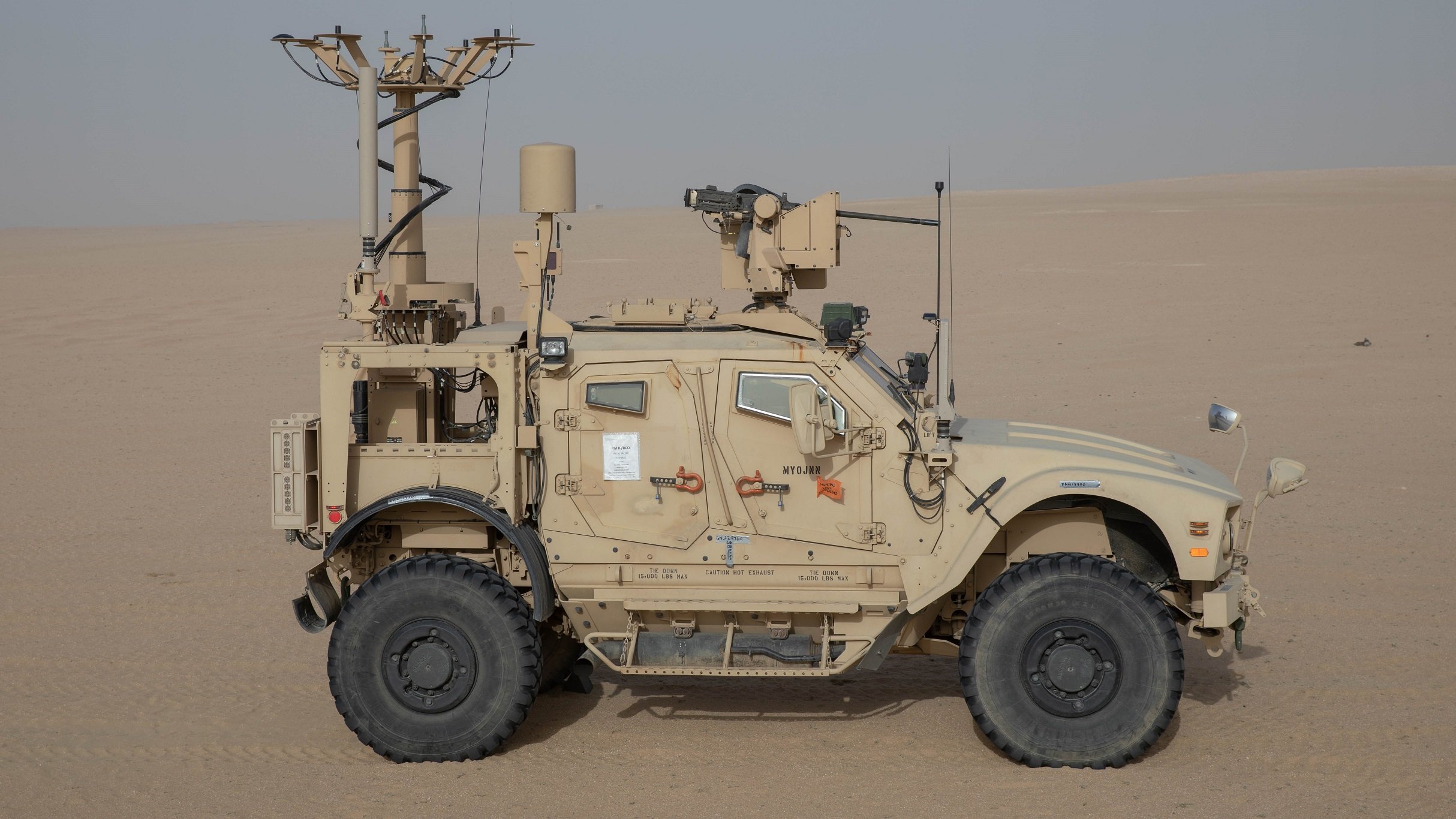U.S. Soldiers with the 1st Stryker Battalion, 4th Infantry Division participated in Mobile Low, Slow, Small Unmanned Aerial Vehicle Integrated Defense System (M-LIDS) training at Camp Buehring, Kuwait.
The Army press release said that the Soldiers trained on the M-LIDS weapon system, which can be mounted on all-terrain mine-resistant ambush-protected vehicle, or MATV, and is designed to target and disable, or destroy hostile drones or other unmanned aerial vehicles, in support of the Combined Joint Task Force – Operation Inherent Resolve advise, assist, and enable mission.
The number of commercial off-the-shelf drones and the availability of kits and online tutorials to build drones out of easy-to-find items, means that counter unmanned aircraft systems (C-UAS) must be modular, open architecture and scalable to evolve with the threat. Both terrorist organizations and nation states have used weaponized drones to inflict damage ranging from targeted attacks on individual tanks to broad scale attacks against strategic critical infrastructure.
The newest M-LIDS provides Soldiers the mobility, firepower and protection required to detect, identify, trackand defeat unmanned aircraft system (UAS) threats.

The current M-LIDS capability also allows easy system improvement as new technolo-gies develop in the future. Through rigorous Army testing, M-LIDS is a low-risk mobile counter-UAS capability thatis available today.
The M-LIDS family of systems uses a modular framework with a cutting-edge capability, overlaid on existing programs of record, to create a mechanism to defeat UAS from the smallest systems to Group 3 unmanned aircraft capable of carrying large explosives or sophisticated observation payloads. These aircraft typically weigh more than 55 pounds, but less than 1,320 pounds and operate below 18,000 feet at speeds of slower than 250 knots—like the Shadow and the Integrator.
M-LIDS uses a range of passive and active sensors to detect, track and identify UAS and non-hostile aircraft. M-LIDS uses a comprehensive network to communicate, allowing the operator to task appropriate mitigation techniques, ranging from electronic warfare to full physical intercepts.